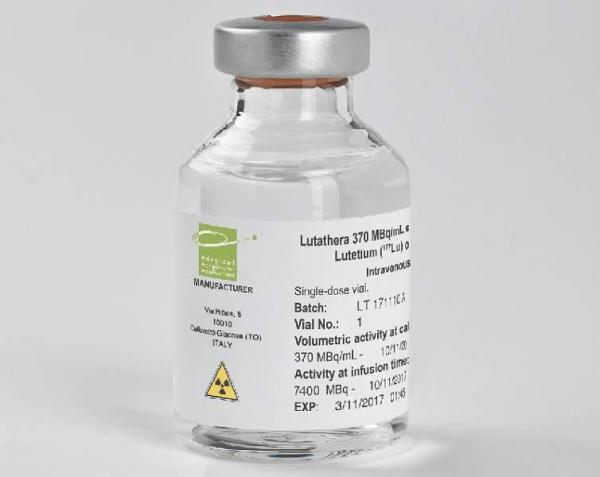Lutathera Disease Interactions
There are 3 disease interactions with Lutathera (lutetium lu 177 dotatate).
Lutetium Lu 177 dotatate (applies to Lutathera) hepatic dysfunction
Moderate Potential Hazard, Moderate plausibility. Applicable conditions: Liver Disease
Lutetium Lu 177 dotatate does not undergo hepatic metabolism. No dose adjustment is recommended for patients with mild or moderate hepatic impairment. Care is recommended when using lutetium Lu 177 dotatate in patients with severe hepatic impairment (total bilirubin > 3 times upper limit of normal and any AST) as its safety has not been studied in these patients. Monitor transaminases, bilirubin and serum albumin during treatment.
Lutetium Lu 177 dotatate (applies to Lutathera) myelosuppression
Moderate Potential Hazard, Moderate plausibility. Applicable conditions: Immunodeficiency, Bone Marrow Depression/Low Blood Counts
The use of lutetium Lu 177 dotatate may increase the risk of developing myelosuppression. Care should be exercised when using this agent in immunocompromised patients. It is recommended to monitor blood cell counts. Withhold, reduce dose, or permanently discontinue based on severity of adverse reaction.
Lutetium Lu 177 dotatate (applies to Lutathera) renal dysfunction
Moderate Potential Hazard, Moderate plausibility.
Lutetium Lu 177 dotatate predominantly undergoes renal excretion. No dose adjustment is recommended for patients with mild to moderate renal impairment. It is recommended to assess renal function frequently in patients with mild to moderate impairment during therapy with this agent. . Monitor serum creatinine and calculated creatinine clearance. The safety of lutetium Lu 177 dotatate in patients with severe renal impairment or end-stage renal disease has not been studied
Switch to professional interaction data
Lutathera drug interactions
There are 242 drug interactions with Lutathera (lutetium lu 177 dotatate).
More about Lutathera (lutetium lu 177 dotatate)
- Lutathera consumer information
- Check interactions
- Compare alternatives
- Pricing & coupons
- Reviews (1)
- Drug images
- Side effects
- Dosage information
- During pregnancy
- FDA approval history
- Drug class: therapeutic radiopharmaceuticals
- Breastfeeding
- En español
Related treatment guides
Drug Interaction Classification
| Highly clinically significant. Avoid combinations; the risk of the interaction outweighs the benefit. | |
| Moderately clinically significant. Usually avoid combinations; use it only under special circumstances. | |
| Minimally clinically significant. Minimize risk; assess risk and consider an alternative drug, take steps to circumvent the interaction risk and/or institute a monitoring plan. | |
| No interaction information available. |
See also:
Further information
Always consult your healthcare provider to ensure the information displayed on this page applies to your personal circumstances.


